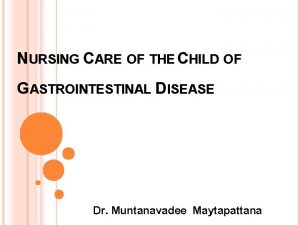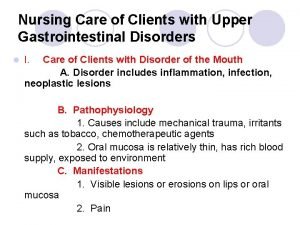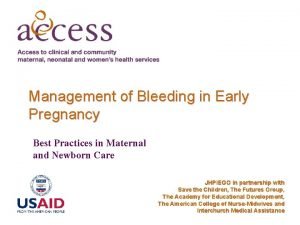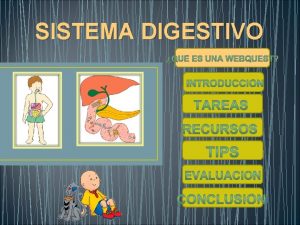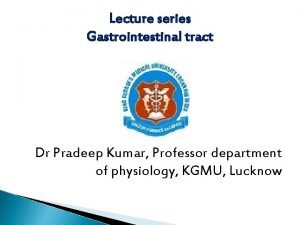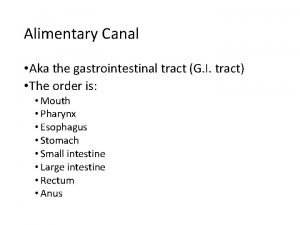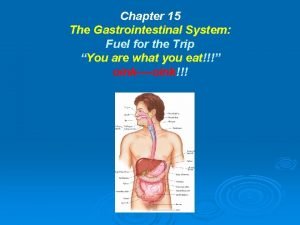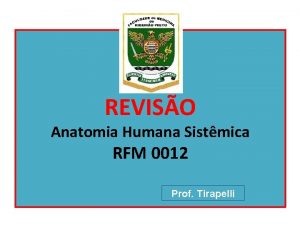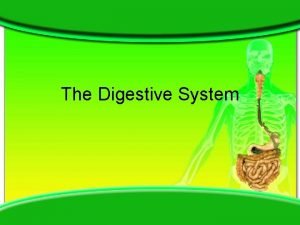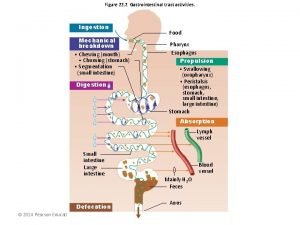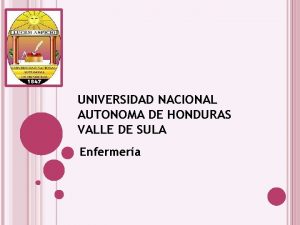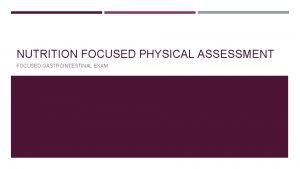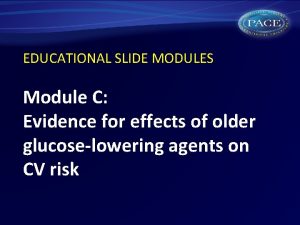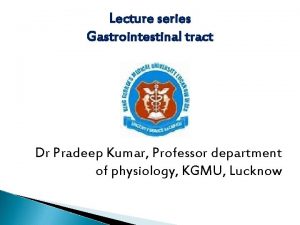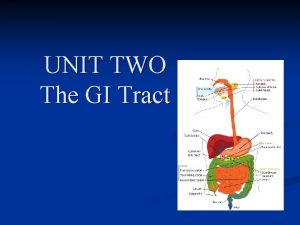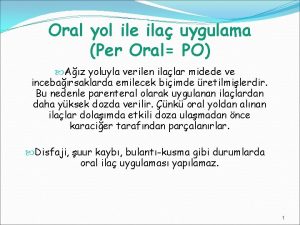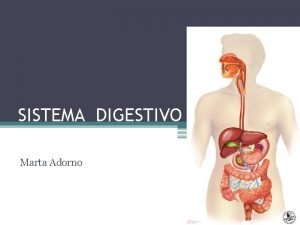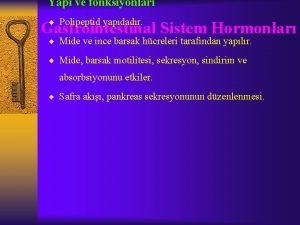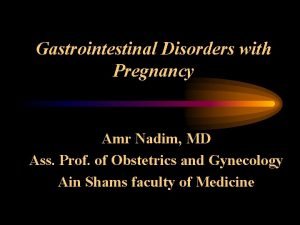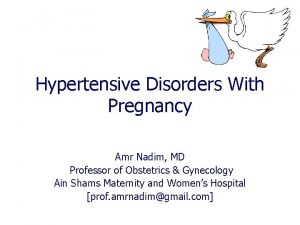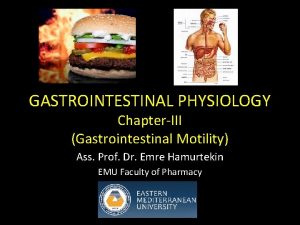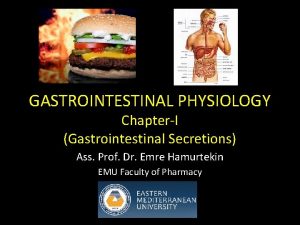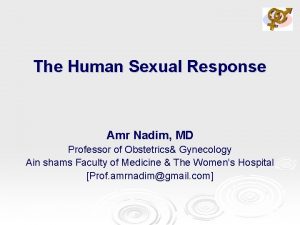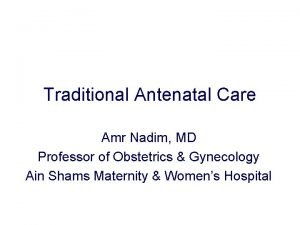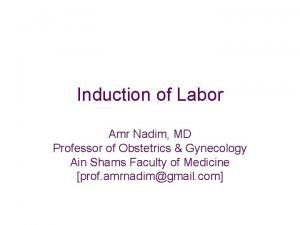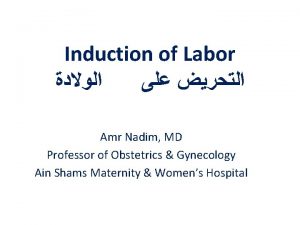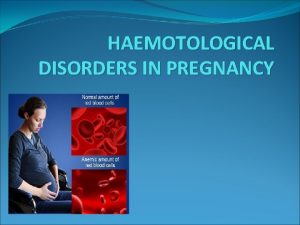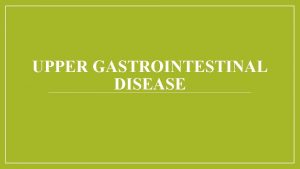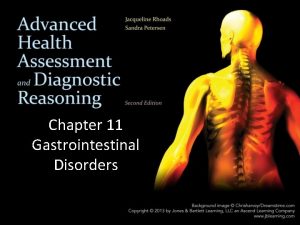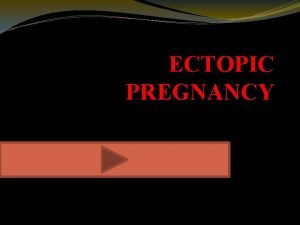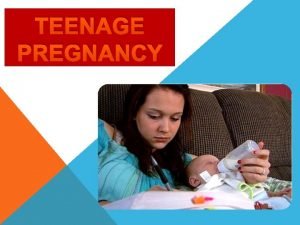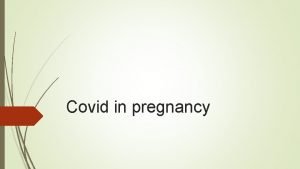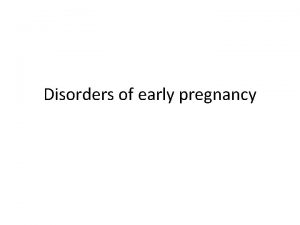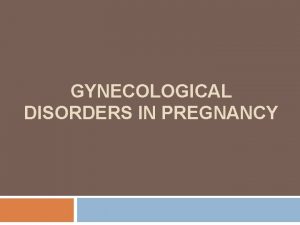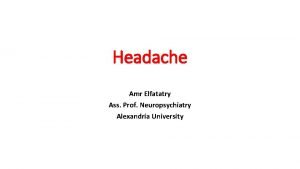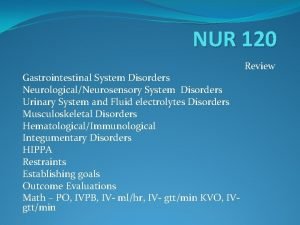Gastrointestinal Disorders with Pregnancy Amr Nadim MD Ass





























- Slides: 29

Gastrointestinal Disorders with Pregnancy Amr Nadim, MD Ass. Prof. of Obstetrics and Gynecology Ain Shams faculty of Medicine

Topics to be covered. . . • Hepatic Disorders – Intrahepatic Cholestasis – Chronic Liver Diseases – Viral Hepatitis • Hepatitis A • Hepatitis B • Hepatitis C and others

Topics to be covered. . . • Gastrointestinal Diseases – Gastroenteritis – Nausea and Emesis gravidarum. Hyperemesis gavidarum – Gastroesophageal Reflux – Peptic Ulcer – Inflammatory Bowel Disease

Topics to be covered. . . • Acute events –Acute Appendicitis –Acute Pancreatitis –Acute Cholecystitis

Guidelines for Managing Gastrointestinal Problems with Pregnancy • Many are due to physiologic changes and are self -limiting • most of the problems could be managed by dietary measures and reassurance. • The decision to continue or to modify treatment for a pre-existing condition should take into account the benefit/risk ratio for mother and fetus • A decision to treat in the first trimester should be considered exceptional

Dietary habits in pregnancy • Dietary craving: – Towards peculiar tastes – Pica: e. g geophagia but also to chalk, clay, ice • Dietary aversions – towards meat, fish, fatty food, etc…. • The occurrence of such food habit bears nothing in common with nausea and vomiting.

Disorders of the Oral Cavity • Aphthous stomatitis: – Vitamin B 12 or folic acid deficiency – May herald onset of GIT, collagen disorders or blood diseases – Treatment is symptomatic+topical steroids and local anesthetics and that of the cause • Hyperplastic gingivitis: – Related to elevated h. CG and sex hormones. • Dental caries (1. 5 -2 times non pregnant): – Increased acidophilic organisms under E+P predominance – Calcium deficiency is no more incriminated

Gastro-esophageal Disorders Reflux • Dyspepsia and heartburn are distressing symptoms that occur in 70% of pregnant women starting from the first trimester. • In pregnancy there is drop of the “Barrier Pressure” : [LOSP] - [Intragastric Pressure] • Lowering of LOSP is due to the effect of E+P • Heartburn is more severe after meals and is aggravated in the recumbent position

Reflux • General measures: – Elevation of the head of the bed, small meals, reduced fatty and spicy diet, avoidance of smoking, caffeine and chocolate, refraining from meals or liquids other than water within 3 hours from going to bed. – OTC antacids: • Avoid Na bicarbonate and particulate antacids • 10 -15 ml after meals and at bed time – – Sucralfate 1 g. Tds Cimetidine 400 mg after the evening meal Ranitidine- Famotidine Domperidone (Motilium) may raise the LOSP

Emesis Gravidarum Morning sickness: does not influence health • Unknown etiology. – Elevated levels of Gonadotropins and progesterone – Elevated level of T 4: occult thyrotoxicosis (GTT or else( – Beta-endorhins secreted by the placenta and binding to opioid receptors at the vomiting center – bla bla!!! • Is encountered in 50 -85% of pregnancies. Most frequently 6 -8 weeks but in 20% may continue into the second and third trimester.

Hyperemesis Gravidarum Vomiting occurring before the 20 th week and requiring admission to the hospital • Affects 0. 5 to 10 per 1000 pregnancies. • Peak incidence between 8 th and 12 th weeks. • Multifactorial etiology: Hormonal, neurological, psychological, metabolic and toxic factors… • Beware of molar pregnancy and Hyperthyroidism. • Laboratory data: – Ketonuria, increasaed urine sp. Gravity, increased Ht. – Hyponatremia, hypokalemia, metabolic alkalosis – Alteration of Kidney and liver function tests.

Treatment Should be tailored to suit individual cases. • General measures: – – Small, frequent meals. Avoiding spicy and greasy diet. Vitamins (including thiamine supplementation). Nutritional consultation • Initial therapy : oral therapy with oral or rectal antiemetics. • Hospitalization: – Intractable emesis – Hypovolemia and/or electrolyte imbalance. – Laboratory anomalies.

Antiemetics The FDA has approved no drug for treatment of nausea and vomiting during pregnancy. • • Pyridoxine(vitamin B 6), 25 mg tds Phospharylated carbohydrate solution. Doxylamine Metoclopropmide (Primpran-Plasil) Promethazine (Phenargan) Chlorpromethazine Ondasterone (Zofran): 4 -8 mg tds Methylpednisolone

Peptic Ulcer Disease • Is of rare occurrence during pregnancy • Some are reporting improvement of their symptoms. • Dietary recommendations • Avoidance of NSAIDs • Antacids and H 2 receptor antagonists • Serious complications are rare …However if occurring they should be managed as the non pregnant patient

Inflammatory Bowel Disease Ulcerative Colitis - Crohn’s Disease • Disease of young adults: – UC: 15 -30 years and CD: 20 -35 years – The fertility rate is unaffected in UC but reduced in CD because of pelvic adhesions resulting from the inflammatory process. • Medical Management: – Sulfazaline and Corticosteroids are safe – Folate supplementation is a must – The use of 6 -mercaptopurine or azathiopine or ciprofloxacine should be reserved to individual cases

IBD. . . • Surgical Intervention: – As for non pregnant ladies • Effect on the outcome of pregnancy: – There is increased fetal loss if: • Manifest for the first time during pregnancy • Colonic rather than small bowel disease. • Uncontrolled and requires surgery • How to deliver? – Vaginal delivery unless perineal scarring – Active perineal disease may render episiotomy healing difficult – Difficult intraperitoneal adhesions are expected in CS

Gastroenteritis Viral , Bacterial or Parasitic • Nausea, vomiting, cramping ands diarrhea with headaches , myalgia and low grade fever. • Symptoms last for 48 hrs. • Treatment is supportive: – Keep patients hydrated with adequate electrolyte balance and place the bowel at rest. – Bowel rest.

Intrahepatic Cholestasis • Most common disorder unique to pregnancy of Variable incidence • Increased risk of prematurity and IUFD • Recurrent in 70% of the cases – C/O: • Pruritis • Jaundice in 50% of cases • No Fever, Emesis, nor nausea • D. D. Viral Hepatitis, Gall bladder Disease.

Laboratory Investigations – Alk. Phosphatase +++ – Moderate Serum Transferases. – Bilirubin (Direct , rarely > 5 mg/dl – Bile acids up to 10 folds. • Diagnostic criteria: Pruritis + Increased bile acids and salts

– Management • Cholestyramine: 8 -6 g /day (3 -4 divided doses) – Weekly Check PT; if prolonged give vit K(10 mg/day). • Diphenhydramine • Dexamethazone • Phenobarbitone – Tests for Fetal well being – Terminate pregnancy when maturity is achieved – Usually the condition subsides 2 days after delivery – Be cautious for postpartum use of COCs

Hepatitis B Virus Parenteral exposure - STD - Vertical transmission • Maternal Infection: – HBV prodrome of arthralgia, myalgia, ±jaundice, fever , nausea & vomiting • Fetal infection; HBe. Ag carries a risk of 85 to 90% risk of chronic HBV and associated sequelae. • Morbidity and mortality: – No worsening of the disease with pregnancy – No CFM, IUFD, abortions or IUGR

Hepatitis B Virus Hepatitis Markers – HBs. Ag: denotes carrier or infective status – HBe. Ag: High infectivity – Anti-HBc. Ag: partial convalescence. – Anti-HBs. Ag: immunity or recovery The risk of fetal transmission is highest in HBe. Ag +ve mothers at the time of delivery

Hepatitis B Virus Management • The US CDC recommend universal screening of pregnant women for HBV. • HBIG interrupt vertical transmission in 90% of cases: – 5 ml of HBIG administered as soon as exposure is suspected. – 0. 5 ml of HBIG given to the newborn in 12 hrs from delivery to be followed by the standard 3 doses of the vaccine. • Recombinant Hepatitis B Vaccination. . .

Hepatitis C • Persistent disease is common. • In utero transmission: 50% higher than HBV. – To date there is no teratogenic Syndromes. – There is however a risk for acute hepatitis or chronic carrier state. • Antibody to HCV - PCR for HCV-RNA • Prevention of vertical transmission by HCIG is equivocal. • Exposed newborns; 0. 5 ml HCIG followed by another dose 4 weeks later.

Chronic Liver Disease • Chronic active hepatitis: – Responds to immunosuppression with corticosteroids. – Increased risk of stillbirths, , prematurity and PE. • Liver cirrhosis: – Infertility is common. – High perinatal loss and poor maternal outcome. • Budd-Chiari Syndrome: – May occur due to the hypercoagulable state of pregnancy. – Abdominal pain + Hepatomegaly & ascitis of abrupt onset.

Acute Appendicitis The most common surgical complication in pregnancy • A high suspicion index is needed…the classical signs are often absent. • Patients present with anorexia, nausea, vomiting, fever, abdominal pain(site depending on the GA). • DD: – Ectopic pregnancy – Pyelonephritis (Most common misdiagnosis) – Acute Cholecystitis – PID – Adnexal Torsion

Appendicitis. . . • Therapy: – Laparoscopy – Laparotomy: There acceptable negative laparotomy rate is 20 -35%. – Antibiotics • Complications include: preterm labor, abortion. If the delay is more than 24 hours the maternal and fetal morbidity is increased Mortality may approach 5% in case of surgical delay

Acute Cholecystitis Second most common surgical complication of pregnancy. • 3. 5% of all pregnant women have gall stones • C/O: – Abrupt onset of right upper quadrant pain, nausea, vomiting , anorexia, intolerance to fatty food • Investigations: – U/S – CBC, serum lipases and amylases • Treatment: – Conservative – ERCP – Surgical

Acute Pancreatitis 1 per 1000 to 1 per 3800 pregnancies • Gall stones are the most common predisposing factor. • C/O: – Midepigastric pain or left upper quadrant pain radiating to the back – Nausea, vomiting, ileus and low grade fever. • Elevated Amylases and lipases are the Keyfindings • Treatment is essentially conservative – Cholecystectomy after the first trimester – ERCP
 Nursing care for gastrointestinal disorders
Nursing care for gastrointestinal disorders Nursing management of gastrointestinal disorders
Nursing management of gastrointestinal disorders Nadim elhage
Nadim elhage Nadim lalani
Nadim lalani Nadim rabaia
Nadim rabaia Dr christopher jernigan
Dr christopher jernigan Molar pregnancy
Molar pregnancy Sinal de lichtenberg medicina legal
Sinal de lichtenberg medicina legal Embriologia del sistema gastrointestinal
Embriologia del sistema gastrointestinal Gastrointestinal structure
Gastrointestinal structure Composition of stomach
Composition of stomach Chapter 15 the gastrointestinal system
Chapter 15 the gastrointestinal system Identifique
Identifique Gastrointestinal medical terminology breakdown
Gastrointestinal medical terminology breakdown Gastrointestinal tract
Gastrointestinal tract Gastrointestinal
Gastrointestinal Motilidad gastrointestinal
Motilidad gastrointestinal Gastrointestinal hormones
Gastrointestinal hormones What is gastrointestinal disease
What is gastrointestinal disease Focused physical assessment
Focused physical assessment Why does metformin cause diarrhea
Why does metformin cause diarrhea Chemotrypsinogen
Chemotrypsinogen Gastrointestinal diagram
Gastrointestinal diagram Sigid djuniawan
Sigid djuniawan Peroral ilaç uygulama
Peroral ilaç uygulama Forgut midgut hindgut
Forgut midgut hindgut Which is not part of the alimentary canal
Which is not part of the alimentary canal Emt chapter 18 gastrointestinal and urologic emergencies
Emt chapter 18 gastrointestinal and urologic emergencies Funcoes da boca
Funcoes da boca Verner morrison sendromu
Verner morrison sendromu
